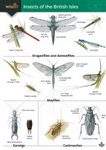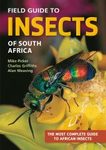Textbook
By: Robert W Matthews(Author), Janice R Matthews(Author)
514 pages, 39 plates with 45 colour photos and colour illustrations; 173 b/w photos and b/w illustrations
![Insect Behavior Insect Behavior]()
Click to have a closer look
About this book
Contents
Customer reviews
Biography
Related titles
About this book
Insect Behavior is the second edition of the text that for thirty years served as the fundamental introduction to a field of study that has been growing enormously.
Today, new technologies and understandings are allowing questions to be shaped – and answered – in ways that once could not have been envisioned. However, massive new information also can overwhelm and obscure the broader perspectives needed to put new discoveries into context. Thus, the times fairly demand that students and non-specialists seek a wider understanding of diverse proximate and ultimate forces that cause animals to behave as they do. Insect Behavior provides that opportunity. The authors strike a balance between modern developments and historical insights, between new examples and old, between empirical work and theory, and between pertinent conclusions and the dynamic field and laboratory experiences from which such discoveries arise.
Considerably updated and expanded, this edition includes 26 case studies, as well as 45 new color plates and 173 figures (over 40 per cent of them new) with detailed legends that add richness to the well-written, accessible text. Like the course that originally inspired it, Insect Behavior will find utility at the graduate and senior undergraduate level for college and university students. However, although some background in entomology or animal behavior is helpful, an in-depth knowledge is not a prerequisite. Thus, Insect Behavior also invites comparative psychologists, science educators, and all others with an interest in the physically small but inestimably important creatures that comprise three-quarters of all animal life on our planet.
Contents
Preface
I. The history and scope of insect behavior
1.1. Introduction
1.2. Conceptual frameworks
1.3. Phylogeny's role
1.4. Questions and perspectives
II. Programming and integrating behavior
2.1. Introduction
2.2. Nerve-based coordination
2.3. Life in a stimulus-rich world
2.4. Hormone-based coordination
III. Spatial adjustment
3.1. Introduction
3.2. Locomotion
3.3. Orientation
3.4. Thermoregulation
3.5. Migration
IV. Foraging and feeding
4.1. Introduction
4.2. Foraging strategies
4.3. Coevolution and the arms race
4.4. Feeding as a communal activity
V. Defense: a survival catalogue
5.1. Introduction
5.2. Defense messages
5.3. Passive messages
5.4. Active messages
VI. Chemical communication
6.1. Introduction
6.2. Mechanisms of chemical communication
6.3. The functions of chemical communication
6.4. The information content of pheromones
6.5. Chemical communication and insect control
VII. Visual communication
7.1. Introduction
7.2. Bioluminescence
7.3. Light reception
7.4. Functions of visual communication
VIII. Mechanocommunication
8.1. Introduction
8.2. Producing and sending signals
8.3. Receiving signals
8.4. The acoustic channel
8.5. Functions of insect communicative sounds
IX. Reproductive behavior
9.1. Introduction
9.2. Courtship and mating
9.3. Courtship and conflict
9.4. Mating systems and parental investment
9.5. Oviposition behavior
X. Parental behaviors and social life
10.1. Introduction
10.2. Social organization
10.3. The insect social register
10.4. Implications and correlates of social life
Credits
Index
Customer Reviews
Biography
Robert W. Matthews is a Josiah Meigs Distinguished Teaching Professor Emeritus at the University of Georgia. An insect behavior specialist, his scientific publications number over 165 research articles.
Janice R. Matthews is a writer and educator with a broad background in the biological sciences. The two scientists have collaborated in entomological field studies in Australia, South and Central America, and the U.S.A. and have co-authored a number of technical and popular articles and books. They have six grown children and a Labradoodle.
Textbook
By: Robert W Matthews(Author), Janice R Matthews(Author)
514 pages, 39 plates with 45 colour photos and colour illustrations; 173 b/w photos and b/w illustrations
"This highly anticipated second edition [...] is a very complete review of animal behavior concepts related to insects. [...] The book includes 28 detailed case studies that explore several specific situations (laboratory and/or field research), along with the methodology used. [...] contains 173 black-and-white figures and 45 color plates. The Matthews' highly didactic writing style makes this book useful to researchers, students, and even laypersons interested in the topic. [...] Summing Up: Recommended. All libraries."
– J. M. Gonzalez, Choice, Vol. 47 (11), July, 2010
"For anyone studying or interested in animal behaviour or insects, this is a must-have reference book. [...] Each chapter is [...] split into sub-divisions that help locate relevant information quickly. [...] Numerous case studies include a handful new to this edition, focusing on research relevant to the associated text. [...] As a comprehensive reference book, I would recommend this text to teachers and undergraduates in the field of animal biology, ecology, entomology and anyone interested in insects or animal behaviour."
– Janet Preece, The Biologist, Vol. 58 (2), 2011



































